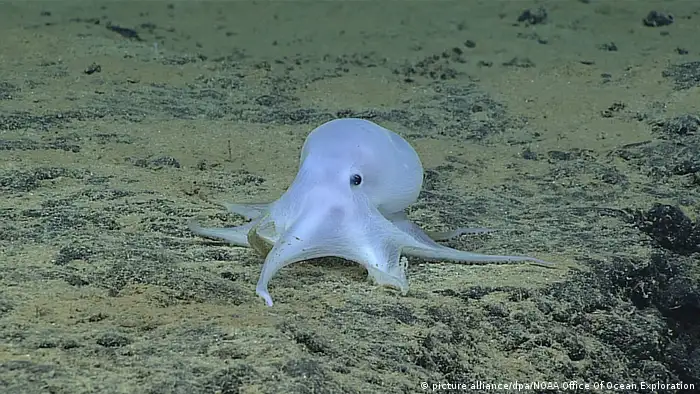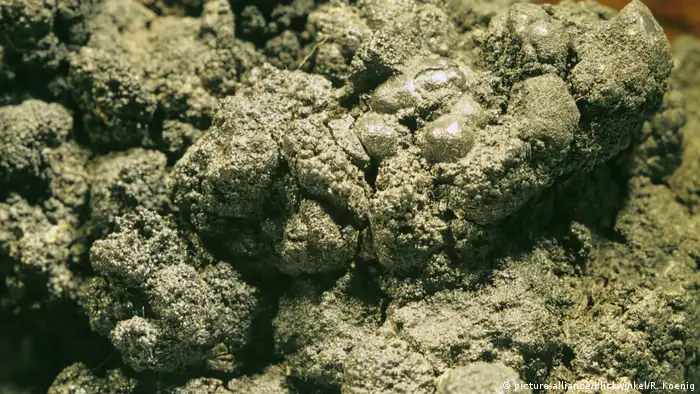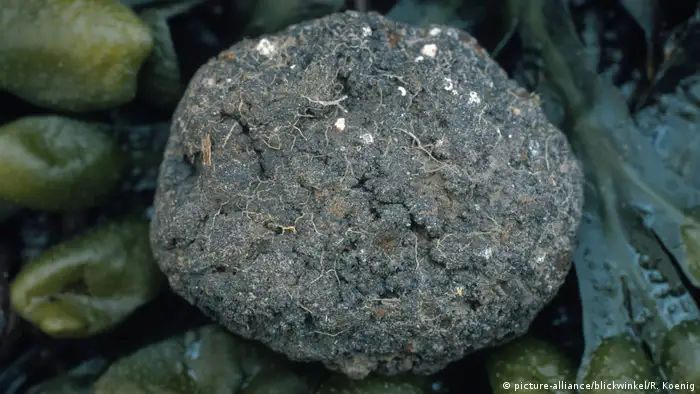Science
'Casper' octopi breed atop hunks of underwater metal
A ghostly form of mini octopus made headlines earlier this year when it appeared before a camera more than 4,000 meters (13,000 feet) under water. "Casper," it turns out, breeds in an unusual place.
In February, he became a social media star: Casper, the ten-centimeter (four-inch) octopus discovered by US deep-sea robot "Deep Discovery" near Hawaii's outlying Necker Island. The researchers who recorded the film at a depth of 14,000 feet immediately published it online. Internet users throughout the world were smitten with the nearly see-through animal, christening him "Casper," in a reference to the well known cartoon ghost.
Now he's back. Researchers, some of them from the Alfred-Wegener-Institut in Bremerhaven, Germany, observed the species of octopus during yet another dive expedition.
"It's such a curious beast that we got very interested in it," said researcher Antje Boetius, a deep-sea and polar researcher involved in the study.
After the first encounter, she said, her team noticed "some of the specimens were hugging a stalk of a sponge on the nodule."
Then, after looking at some high-resolution photos, they had a revelation.
"We said, 'This guy's not really hugging a sponge, it's actually brooding its eggs.'"
The small octopi lay their eggs on the stems of a certain kind of sea sponge after it has died. The sponges only grow exclusively on manganese nodules, which appear underwater as small metal knobs. The octopi have evolved to depend on exactly these breeding sites, where they return for years on end. They have no other choice.
"This is just one example of many species dependent on these manganese nodule habitats," the researcher told DW.
As the German-American team describes in the journal "Current Biology," the problem is that the chemical element manganese and other rare metals are present in these knolls - as well as copper, cobalt, zinc and nickel. With surface mines expected to run out of some rare metals over the coming decades, companies and governments are looking at underwater mining as an alternative.
Manganese nodules have in fact been removed experimentally from the sea floor as a kind of test case just over a quarter century ago. "We followed up to see the ecological effects of mangalese nodule mining," Boetius said.
For the researchers, the octopus' dependency on this unique underwater ecosystem is an argument for further investigating the ecological consequences of removing manganese nodules prior to mining them commercially.
DW recommends
- Date 20.12.2016
- Author Hannah Fuchs, Conor Dillon
- Feedback: Send us your feedback.
- Print Print this page
- Permalink https://p.dw.com/p/2UY8W
- Date 20.12.2016
- Author Hannah Fuchs, Conor Dillon
- Send us your feedback.
- Print Print this page
- Permalink https://p.dw.com/p/2UY8W




